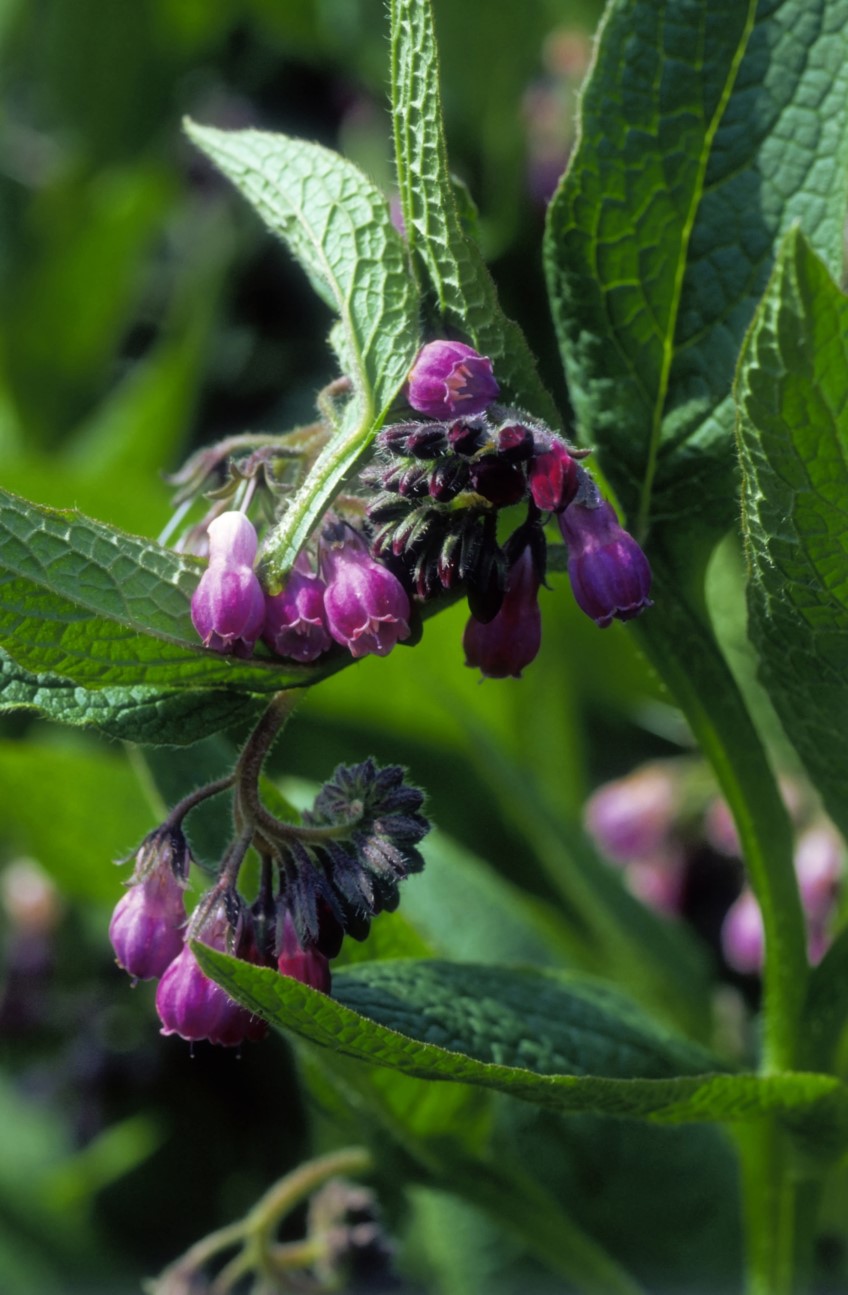This home-grown fertiliser contains more potash, and more nitrogen, than commercial feeds, and costs only the price of a bucket and its water.
Your vegetables will love it, especially your tomatoes.
Comfrey (Symphytum officinale L.) is a perennial herb with broad hairy leaves and small bell-shaped white, cream, purple or pink flowers. It is
native to Europe, where is grows in damp, grassy places. Comfrey is not a culinary herb, in fact it’s poisonous. It great powers lie in its ability
to store, and then pass on, minerals and nutrients. This has made it a popular choice as a fertiliser for organic gardeners for generations.

Photo - photolibrary.com
Mature comfrey plants can be harvested up to four or five times a year. It is said that the best time to cut comfrey is shortly before flowering, as this
is when it is at its most potent. Comfrey will continue growing into mid-Autumn, but it’s best not to take cuttings after early autumn so that the
plant can build up winter reserves. As the leaves die back and break down in winter, nutrients and minerals are transported back to the roots for use
the following spring. As well as making the all-purpose fertiliser comfrey tea, comfrey leaves can also be added to the compost for extra potency!
A word of warning though - watch out when dividing comfrey plants, and take care not to spread root fragments around, or dump them in the compost. Comfrey
can be a very difficult plant to get rid of.
Comfrey tea
What you need
A nice bundle of comfrey leaves
A bucket
Water
Half-fill a bucket with chopped comfrey leaves and weigh down with a brick. Fill the bucket with water and cover for three weeks. Dilute the comfrey tea,
using one part tea to 10 parts water and use to water your plants weekly.
Text: Linda Ross